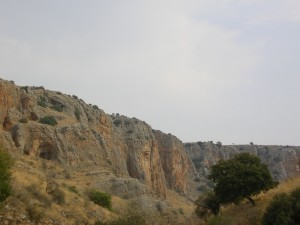The course at Z is going extremely well. I feel as though the 26 teachers participating are involved and eager to try to change things in their writing instruction and that many are thinking about their own learning and really taking ideas and thoughts back to their classrooms.
Last week we had a virtual session and the task I gave was to write a professional narrative connected to the teaching of writing and/or writing with students. Beforehand we discussed the rational of the task and I even brought an example from last year’s group. Many of the participants in this group are not too computer confident and I was worried that they wouldn’t manage finding the virtual campus, posting their stories and responding to others. All in all my worries were unwarranted and most of the teachers wrote and posted narratives. At the moment they are reading and responding to other stories.
The night before this week’s session, I was busy collecting the stories (for future use…) and responding. I respond to each and every narrative and try to be involved in the responses too. Many of my responses at this stage are questions which will help in the revision process to come.
One story made my heart race and brought tears to my eyes. I read it again and again before I wrote a detailed response. Immediately I wrote an email to the teacher author and asked her permission to bring her narrative to the group session. She readily agreed.
O wrote that at our last session she wasn’t able to concentrate – not in my lecture, not on the PowerPoint presentation that went with it and not on the workshop we did together. She said that concentrating on the writing process wasn’t possible for her. O told that that morning she had been on a hike with her class and that at one stage an eight year old boy fell off a cliff. He was extremely lucky that he wasn’t killed and that he was only injured fairly lightly. She told of her experience, of the phone call from the principal telling her that the incident was already reported on the Internet, of the terror, the helplessness and the frustration of not being able to protect her student.
O went home after our session and didn’t sleep all night. She was terrified of walking into the classroom the next morning and facing this reality. The injured child was in hospital and she had a whole classroom of traumatized children to deal with. After hours of deliberation, O remembered what we had been talking about in the course session and decided, at 4 am when she finally got out of bed, to devote the day to writing with her pupils. She decided to spend the day writing with her students to different audiences with different goals.
Lacking confidence, O entered the classroom and after a brief discussion, explained to the pupils what they could do. Some wrote to their injured friend in hospital, some wrote to the people responsible for the hiking trail, some wrote thank you letters to the parents who helped on the hike and helped deal with the complex situation and some wrote rules for behavior on trips outside school. During the writing time, O was free to move between the pupils and talk privately to each and every one of them. She could hear how they were coping and how they were feeling.
The pupils wrote and wrote. O was surprised that even her weakest students, those that usually refrain from writing, were creating important texts. She wrote that she sensed that the act of writing was helping these children process the experience and regain confidence and control. She admitted that the classroom interactions, the writing and the activity helped her regain her self confidence as a teacher. The pupils were so involved in this process that they asked to continue the next day, they had discovered that they enjoyed writing for real purposes and for real audiences. They had experienced writing as a means of sincere self expression.
A few days later O decided to tell this story as her narrative about writing. She told her story bravely and as a result received a lot of positive and supportive feedback from the other teachers. This event has changed the way O sees writing instruction and has changed the way many of her pupils view writing tasks.
One of the questions I asked O was whether she had told her principal about the way she decided to cope in the classroom. She replied that she hadn’t . I suggested she show the principal (if not all the other staff) her narrative – they can all learn from it as we did in the group.
Since reading O’s story she is with me all the time. I am thinking about her terrifying experience, about her coming to my course after such a traumatic event and not telling anyone and about how she used writing to help her students recover.
Apart from receiving a lot of satisfaction that the materials we discuss in the course are making a real difference in the professional lives of teachers and their pupils, I was excited to see the process of writing itself encouraging the creation of new texts. O described how the writing done by her pupils encouraged her and stimulated her to write and I told her that her narrative had stimulated me to write a narrative of my own. I have no doubt that the writing of many teachers in the course will be enriched by the sharing of O’s story.
In a reflective discussion in her classroom, O told her pupils that she too had written a story after the traumatic event. Her pupils were very curious to hear that their teacher enjoyed the benefits of writing too.
I still have a lot of thinking to do about the links between O’s story and the learning in our course and about professional narratives being links in a chain, a chain which strengthens and supports both writers and readers.
I am waiting to read the responses on the online forum, to see O’s text revised and to see the influence of O’s story on other narratives being created by teachers in the group.

The location of the hike.
Picture: http://tiyulim.blogspot.com/2007/10/blog-post_19.html



